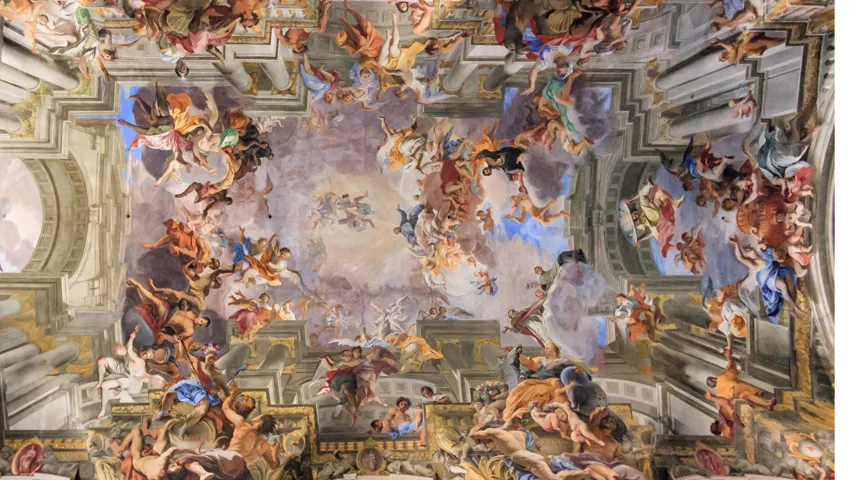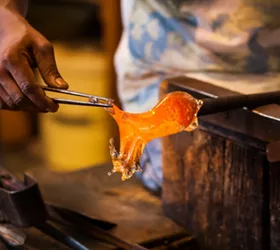Basilica of Sant'Agostino in Campus Martius
The façade of the Basilica of Sant'Agostino in Campus Martius is majestic and sober, but it has allowed itself two side volutes. It thus reveals both its Renaissance origin and the 18th-century evolution of the church, completed in 1420, rebuilt sixty years later by Giacomo da Pietrasanta and Sebastiano Fiorentino, who enlarged it and "raised" it above the road to protect it from the flooding of the Tiber, and then restructured in the 18th century. In all cases, the work was commissioned by the Order of St Augustine, which previously officiated in the church of San Trifone in Posterula; this explains the double title, "Basilica of San Trifone and Sant'Agostino", sometimes used to refer to this church. The façade, today one of the symbols of the Sant'Eustachio district, was made using travertine recovered from the Colosseum, or so it is said.
The interiors, on the other hand, are the result of a mid-18th-century redesign by Luigi Vanvitelli, who, in the same period, added the two side volutes to the façade, rebuilt the dome and bell tower, and redesigned the convent annexed to the basilica, which is still the headquarters of the Order of St. Augustine. At least three masterpieces have survived from the basilica's first season of life: the Prophet Isaiah frescoed by Raffaello on the third left pillar, from 1512; below it, the Madonna with Child and Saint Anne, a contemporary sculpture by Andrea Sansovino; and the highly venerated statue of the Madonna del Parto by Jacopo Sansovino (1521), on the counter façade next to the main portal. Three other fundamental works preserved in this basilica date back to the 17th century: the high altar, designed by Gian Lorenzo Bernini in 1627 and made by Orazio Torriani, with a Byzantine Madonna from the church of Hagia Sophia in Constantinople; the altarpiece with St.Augustine between Saints John the Baptist and Peter the Hermit by Guercino (1637); and above all, the altarpiece of the Pilgrim's Madonna (or the Madonna of Loreto) by Caravaggio (1603–04, in the first left chapel), considered scandalous because of the appearance of the Virgin, who has the features of a model well known in Rome at the time for her courtesan activities, her popular clothing and the realism with which the adoring pilgrim, whose feet are bare and swollen, is depicted.
Caravaggio is said to have donated this painting to the basilica as a personal thank you to the Augustinian convent: here, in fact, he had found hospitality after wounding a man out of jealousy in nearby Piazza Navona, thereby avoiding arrest.




















